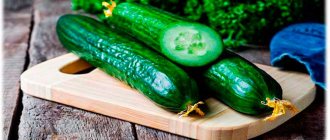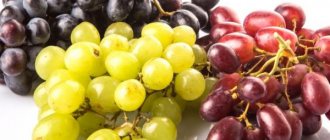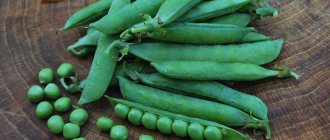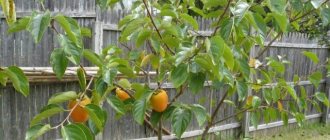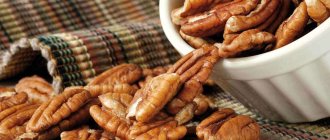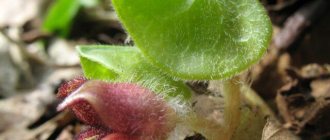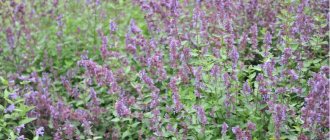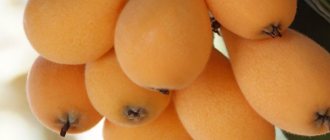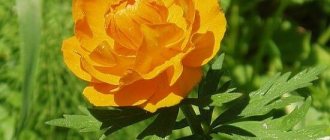Persimmon belongs to the plants of the Ebony family, genus Diospyros. It grows in the form of shrubs or small trees that live up to 500 years. The historical homeland of this fruit is China; persimmon is grown in Japan, Greece, many countries of Eurasia, Australia and America. The trees bear bright orange berries with fleshy, often tart flesh and a sweet, astringent taste. This is precisely the difference between persimmon and other fruits. The ripening and harvesting season is in autumn and winter. All over the world, people value not only the berries, but also the wood, which is used to make furniture and expensive musical instruments.
Description of the persimmon variety Korolek with photo
Korolek persimmon is often called chocolate or “black apple”. Externally, the tree looks like a cherry and can reach a height of twelve meters. Its leaves are oblong, dark green, lighter on the back. Flowering of Korolek persimmon begins in May. Single bright scarlet buds bloom on the branches. In the phase of full ripeness, the ovaries reach the size of an average apple, their shades range from bright orange to brown. If the berries are unripe, they are tart, with an astringent taste and a slight bitterness. In October, the pulp acquires a creamy structure, a chocolate hue, and becomes sweet.
The shape of the fruit can be round, flattened, slightly elongated, heart-shaped
Useful properties of persimmon
Due to the presence of a huge amount of useful substances in its composition, persimmon has a number of beneficial properties. Thus, vitamin A contained in persimmon prevents cancer, improves vision and skin condition, and vitamins C and P reduce the fragility and permeability of blood vessels and increase immunity. The pectin contained in persimmon helps with gastrointestinal disorders, and its pulp has a bactericidal effect. The iodine it contains helps with thyroid diseases.
Persimmon is useful for the prevention and treatment of cardiovascular diseases, anemia, varicose veins, bleeding gums, and normalizes the functioning of the reproductive system.
The benefits of persimmon
In addition, persimmon:
- improves appetite
- quickly satisfies hunger
- increases performance
- has a diuretic effect
- has tonic properties
- calms the nervous system
When does the Korolek persimmon ripen?
The persimmon season begins after the first frost. In October, when the leaves completely fall from the trees, the fruits ripen. Korolek reaches its ideal taste in November and December. The fruits cease to be viscous and acquire a sweet taste and juiciness.
You can distinguish the most delicious ones by translucent brown pulp, dark spots or stripes on the peel.
Important! If the spots on the Wren fruits are too large and soft, it means they are already spoiling.
In place of the buds in July, rapidly growing ovaries are formed
Minuses
Whatever variety you choose, it will show its frost resistance only if certain conditions are met, namely:
- The place where persimmons are planted should be sunny and windless . Ideally, the tree is fenced off from possible wind, but here you need to take into account that, depending on the variety, it can grow up to 4.5 meters. If there is no such place, then your seedling may die and you will waste your energy, money and time.
- Constant watering and care. Persimmons need moisture. In the first year, during the growth stage of the seedling, you should regularly water it throughout the warm season, literally every day. Moreover, the larger the seedling grows, the more buckets of water it will require.
Attention!But you need to know when to stop: excess moisture and waterlogged mail are also harmful to the plant.
Persimmon is a dioecious plant. There are only two self-fertile varieties for our latitudes:
- Mid.
- John Rick.
The rest are all dioecious. This means that without pollination, a tree can theoretically bear fruit, but it may not bear fruit with a lesser degree of probability. It depends on your luck here. To be sure, you need to plant at least 4 female plants per one male plant. Not everyone on the site will find so much free sunny space with protection from the wind, given that the tree crown opens quite widely.
There is a risk of being deceived when purchasing and purchasing a completely different variety.
Even if all the above conditions are met, the persimmon will begin to bear fruit in 4-6 years .
Composition and benefits of Korolek persimmon
Persimmon is considered a valuable and nutritious product for the human body. This is due to its rich chemical composition, which includes:
- Vitamin A – improves vision, strengthens the immune system.
- Vitamin C – helps restore tissue and remove radicals.
- Vitamin E – has a positive effect on the reproductive system.
- Vitamin K – helps strengthen bones and blood clotting.
- Vitamin B6 – has a positive effect on the functioning of the gastrointestinal tract.
- Thiamine – essential for muscle and bone growth.
- Potassium – helps supply oxygen to the brain, support memory and clarity of thinking.
- Copper – ensures normal metabolic processes.
- Manganese – promotes the transmission of impulses between cells.
Regular consumption of persimmon has a beneficial effect on the cardiovascular, nervous, and endocrine systems. In folk medicine, Korolek persimmon has found wide application. An infusion of the peel is used to treat allergies, the pulp is applied to burns and insect bites, a decoction of the leaves can cleanse wounds of pus, and the juice of the fruit is used for scurvy.
Persimmon fruits are recommended to be eaten for edema, obesity, anemia and vitamin deficiency
Contraindications for use and possible harm
The benefits and harms of persimmons for the body have long been determined by nutritionists and doctors. Chocolate kinglet is the leader and record holder in terms of benefits for the human body in winter. However, eating fruits is not always permitted by doctors. In some cases, it is better to refrain from eating persimmons until you consult a doctor. When you can’t eat persimmon:
- for diabetes mellitus; fruits contain a lot of saccharides, their effect on insulin production is unpredictable for patients;
- with obesity 3 degrees; For overweight people, the kinglet is recommended only as an independent snack - it should not be eaten after a heavy lunch;
- breastfed; persimmon is generally safe, pediatricians allow it. But in the first month after the birth of the baby, the mother should not feast on the fruits. Eat a piece with caution only after two to three months. And check to see if a reaction has appeared in the form of spots, rashes or redness on the baby’s body.
- children under 5 years old; Since persimmons contain a lot of tannins, their effect on the child’s body has not been studied, which means you should refrain from consuming them.
- with intestinal obstruction. Persimmon can cause constipation and the formation of undigested pieces of food. If you have a tendency to have hard stools, you should discard the fruits.
When choosing persimmons, pay attention to appearance: do not buy fruits with pale green leaves or damaged, spotted skin. A ripe kinglet has dry leaves that wrinkle when lightly pressed. And one last tip: if you don’t like a slightly astringent taste, freeze the persimmons. After thawing, it will only taste better, and the texture will resemble aromatic fresh fruit mousse with magical chocolate notes.
Growing Korolek persimmon
You can grow a persimmon tree on your site yourself or by purchasing a ready-made seedling. In the first case, the Korolek variety seed is removed from the fruit, washed and placed in the refrigerator for two months, wrapped in a damp cloth. Before planting, they are treated with a growth stimulator (Epin) and buried 2 cm in a container filled with loose, moist soil (loam or sandy loam). Cover the top with film or glass until shoots appear, removing only for watering or ventilation. After the sprout appears, the shelter is removed and the small seedling is transferred to a place with diffused light.
Important! The process can be greatly simplified if you purchase a ready-made Korolek persimmon plant.
The seedling is grown for two years in a container, after which it is planted in open ground.
Landing
The optimal time for planting persimmons is spring or autumn. In the second case, survival rate is better, but all work must be completed two months before the onset of frost. Choose a healthy seedling, without signs of disease or damage, that is two years old.
It is believed that the lifespan of a persimmon can reach five hundred years, so choosing a place for a tree must be approached responsibly. Persimmon Wren is a tall plant and it is necessary to leave enough space for each, since the feeding area of an adult tree is at least 64 square meters. The best area for it is near a wall or high fence, well lit by the sun, protected from drafts and strong winds. Drained loam is suitable as soil for persimmons. To perform a proper landing, follow the following algorithm:
- A hole with a volume of 50-60 liters is dug at the selected location two weeks before planting.
- At the bottom, a drainage layer is created from broken bricks, pebbles, and expanded clay.
- Humus is poured on top in the form of a mound.
- The day before planting, soak the root system of the seedling in a solution of a growth stimulator.
- Place it in the center of the planting hole and straighten the roots.
- Cover with soil and humus without compacting the soil.
- Place a peg nearby and tie the seedling.
- Water generously (20 liters of water).
- Mulch the soil around the trunk.
Important! The root collar should be buried 5-7 cm.
It should be remembered that Korolek persimmon does not like swampy soils, as they contribute to root rot and plant death. If the site is located in low-lying areas, you need to create an elevation before planting. Heavily fertilized soils are not good for fruit trees. This circumstance can cause excessively rapid growth and inharmonious development of the crown. The further condition of the seedlings depends on the quality of their care.
The first fruits may appear on young trees two years after planting
Rules of care
Persimmon Korolek is an unpretentious plant and does not require labor-intensive care, but responds to care very quickly. Attention should be paid to soil moisture, fertilizing, pruning plants, and protecting them from diseases and pests.
Watering, fertilizing
The wren loves frequent watering in the hot summer, but if it is over-watered, the persimmon can greatly increase its growth, elongate, and bear small, watery fruits. A day after watering, the tree trunk circles must be loosened and mulched with peat, compost or well-rotted manure.
The first feeding is carried out only eight years after planting the Korolek persimmon. Phosphorus-potassium fertilizers are applied to help plants prepare well for winter, survive frosts, form flower buds, and produce a rich and high-quality harvest. The Kinglet is fed three times per season - at the very beginning of spring, before flowering and in the phase of fruit formation. In addition to applying fertilizers to the soil, you can carry out foliar feeding using potassium iodide.
The tree does not grow well in drafts, in the shade and on the cold side of the site
Preparing for winter
To preserve young Korolek seedlings, it is necessary to ensure their protection from low temperatures. They use cardboard boxes, lutrasil and spruce spruce branches. An additional layer of mulch 20 cm thick will help insulate the persimmon root system.
Trimming
The first shaping haircut is carried out immediately after planting. For this purpose, the central conductor is shortened to 80 cm, which stimulates the growth of skeletal branches. A year later, the trunk is shortened to 1.5 m, the side shoots are lightly trimmed, and damaged branches that grow inside the crown and thicken it are removed.
WHICH VARIETY TO CHOOSE
Thanks to new selections, we now have winter-hardy varieties with large and sweet berries. Three groups of varieties are cultivated in Russia.
Korolek
Late and high-yielding variety. It begins to bear fruit in October, the berries on the branch can last until November. The fruits of Korolok are dark brown, round with many seeds. They are sweet and quite large - they weigh, on average, 150-200 g. The plant reaches 10 meters in height and can withstand 30-degree frosts. The wren does not suffer from autumn and spring diseases.
Russian
Most persimmon hybrids are heat-loving. But the Russian woman, unlike them, is highly resistant to cold weather. The advantage of the variety is also that you do not have to spend money on drugs to fight diseases - the Russian woman does not suffer from them.
The fruits ripen early - already in September. They have an interesting feature: after being removed from the branches, they are left to ripen for several more weeks. Their flesh is sweet and aromatic. The mature fruit weighs about 120 g.
Bull's heart
The most common variety of persimmon. A 4-meter mature tree produces fruit weighing about 500 g. It can bear fruit for up to 50 years and does not require a neighbor for pollination. Feels good in warm climates, but with proper care can tolerate temperatures down to -30 C. Late variety - the berries ripen in November.
Disease and pest control
If fruit trees are regularly cared for, they do not get sick. In the absence of proper care, the Korolek persimmon is attacked by mites, caterpillars, foliage, buds and fruits are affected by scab and gray rot. To combat pests and diseases, fungicides and insecticides are used, carrying out at least two treatments per season.
Important! For prevention purposes, it is necessary to regularly carefully inspect trees, care for them, and keep the garden clean.
A distinctive feature of the Korolek persimmon is its chocolate color, sweetness and lack of astringent taste.
How to grow persimmons at home
You can grow persimmons yourself using the seeds of ripe fruit. With proper planting and care, the tree will delight not only with its appearance, but also with its juicy fruits.
It is highly advisable to use seeds of frost-resistant persimmon varieties for planting; such varieties are more unpretentious and hardened. From a beautiful ripe fruit that has no signs of rotting or damage, carefully remove the seeds. Planting includes several stages:
- rinse the seeds with water and immerse them in a container with a weak solution of potassium permanganate in a pale pink shade for 2 days, this is necessary to disinfect the seeds and determine the material suitable for planting;
- if some seeds float, they are not suitable for planting. The remaining bones need to be “awakened”. To do this, gently rub them on the sides with sandpaper or scratch them with a needle;
- moisten a piece of bandage or gauze generously with a solution prepared from water and one of the special preparations: Ecopin, Zirkol or Ecosil, in a proportion of 1 teaspoon per liter of water;
- Place the seeds between layers of gauze and place in a plastic bag, tie it well, it should be filled with air. Place the bag in the refrigerator for 2 months, where the temperature should be +5 or +7 degrees. Or place in a warm place where the temperature is 35-40 degrees. Under the influence of heat, the seeds will hatch within 7-10 days. From time to time, look through the bag and check the seeds so that they do not dry out or become moldy;
- prepare the soil from peat and clean river sand in a ratio of 1 to 1, carefully plant the sprouted seeds to a depth of 2 cm. The pot should have drainage holes;
- cover the pot with glass or polyethylene, place it close to heat, a radiator is ideal;
- Raise the greenhouse regularly, ventilate and water the soil. The first shoots should appear in 15-20 days;
- When sprouts appear, remove the glass or plastic. Often at the end of the sprouts there may be a shell from the seed, which can sit quite firmly on it. It must be carefully removed, otherwise the sprout will die. Use a small knife or nail scissors and remove the casing. If the seed sits too firmly, spray it with a spray bottle, cover the pot with plastic wrap and leave it in a warm place overnight. In the morning the seed will easily come away from the sprout;
- When the sprouts grow to 10 cm and they have leaves, plant each one in a separate pot. The transplantation must be careful, transfer the sprout together with soil, then fill the entire container with soil. Pots don't have to be big. Cover the pot with glass, lift it periodically, irrigate and ventilate the sprouts;
- After 2 months, when the persimmon has grown to 40 cm, replant it in a larger pot using the transshipment method.
Seedlings grow quickly, it is important to provide them with light and constant watering. You cannot moisten the soil too much to prevent the roots from starting to rot. During the first 5 years, replanting should be done frequently, since the roots develop very actively, preferably in the spring. With each transplant, the pot should become larger in size. In the future, replanting is carried out every 2-3 years, but the top layer of soil must be changed every year.

